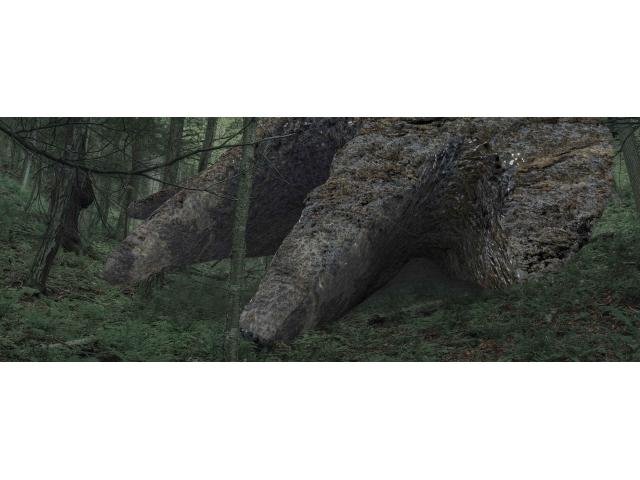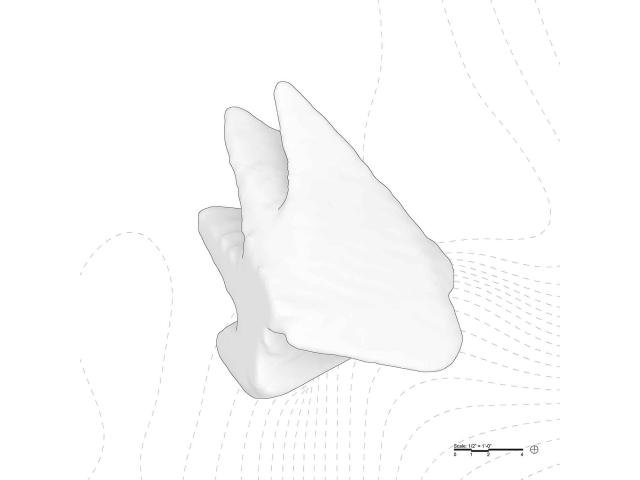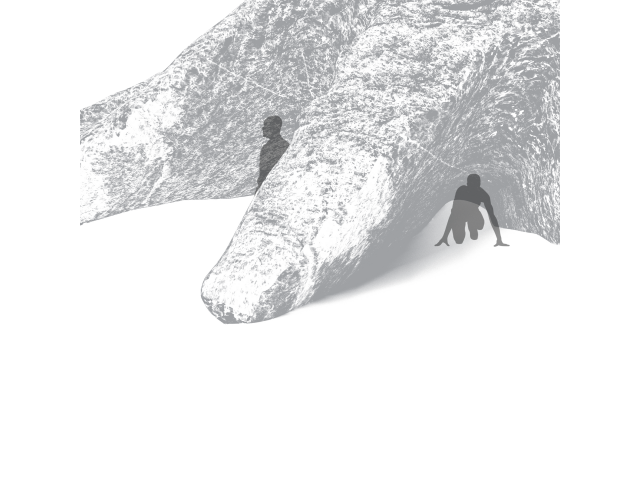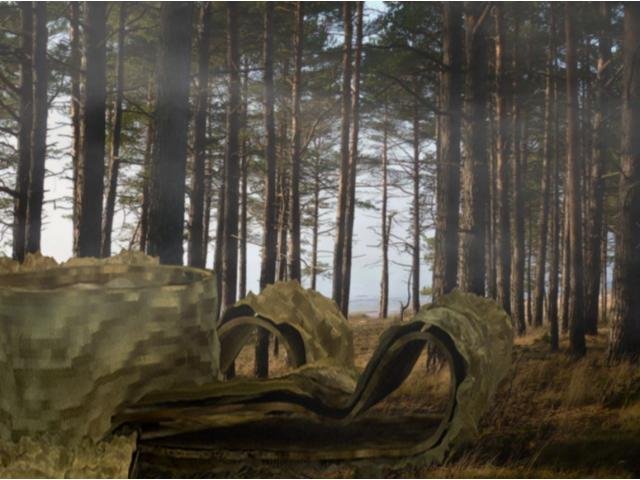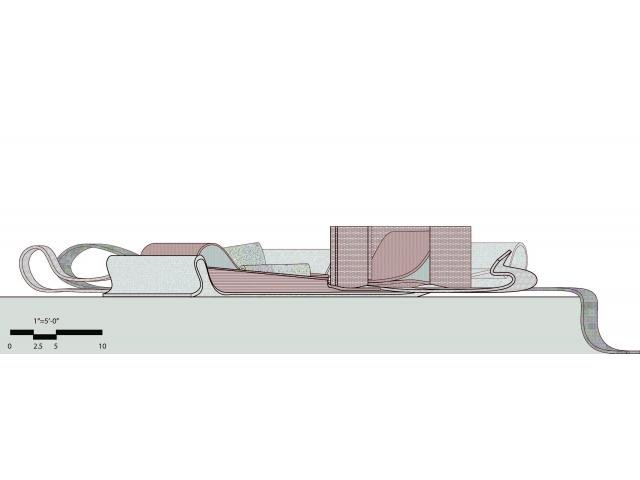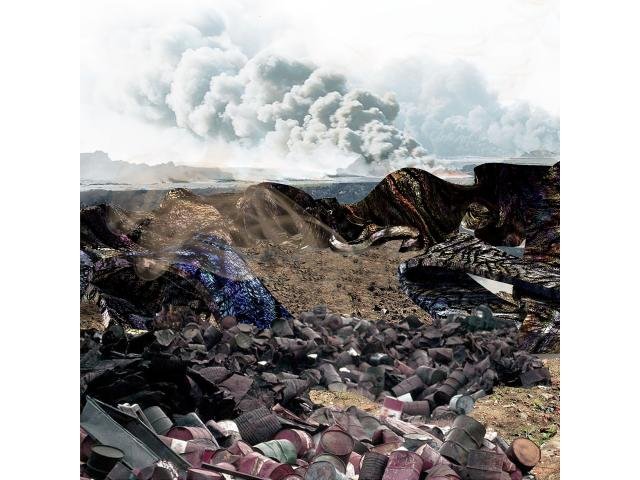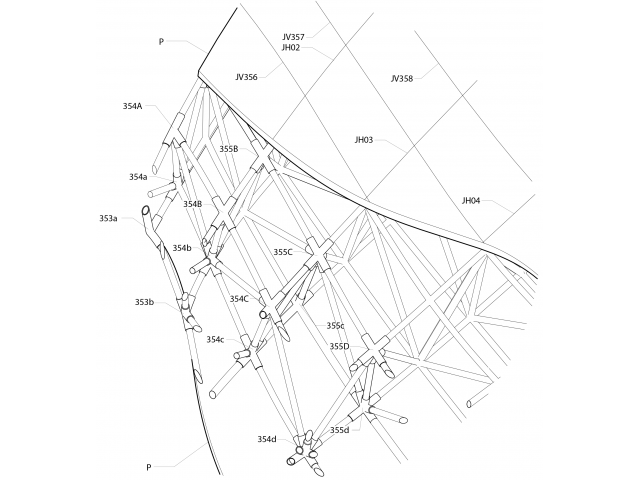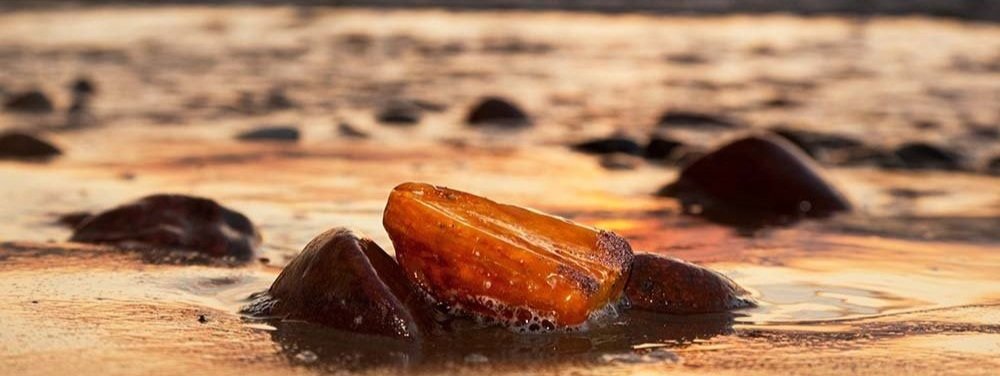
Gems and Fetishes on the Latvian Coast explores the poetics of conjugate objects to create site-specific landscape installations for long distance backpacking shelters
This third-year, undergraduate topic studio explores the creation and representation of exquisite objects in the landscape. Using a wide array of analog, digital, and post-digital techniques, students have explored the poetics of conjugate objects while experimenting with evocative imagery and contemporary fabrication. The studio operates within the realm of art as object, questions the notions of object as image, and attempts to locate itself somewhere within representation as landscape.
The studio referenced the Amber Road Trekking Cabins Competition as a guide for programming this project. The Amber Road, one of the most popular hiking trails in Europe, follows the coast of Latvia along the Baltic Sea. Known for its amber deposits that routinely wash up on shore, the region’s vernacular has yet to be harvested in a representational capacity. Students in this studio aim to understand and experiment with the pragmatic uses of rest stops, temporary enclaves, and sculpture while questioning the definitions of art, objecthood, space, shelter, and image.
The competition calls for temporary shelter of up to four people at a time. The studio experimented with object scales and materials that were neither appropriate nor absurd for this task. Intimate familiarity with designed forms and the interface with the human body are paramount in this endeavor. This third-year undergraduate landscape architecture topic studio was written and taught by me in the Fall Semester of 2017 at Cal Poly Pomona.
The Bubblegum
Rodney was a lonely individual for a long time. He Always wanted to break away from the pressures placed on him by society. At the time, we both worked as accountants; although Rodney never found happiness. I was the oblivious type; I found “happiness” through material excess. At a certain point he told me, “Adrian, I can’t take this anymore, I feel like I’m going to die here.” I told him, “What are you talking about? We’re happy working here, we’re making a lot of money.” “No, I need to go,” he said. I decided to go along with it, so we departed. After a while on out trek, we found ourselves on a foreboding coastline in an ambiguous location. It was late in the evening, very cold and foggy. I noticed the silhouette of the forest trees; at a certain point it changed from trees to a strange form. I didn’t think much of it, so we just decided to pitch a out tent next to the form. When we woke the following morning, we realized what the object was… it was an enormous piece of chewed up bubblegum. I was taken aback from it, but Rodney made a profound connection with it. He mentioned that it was both the forms and material that allowed him to make that connection. The forms expressed movement while the material revealed stickiness and tension. From that moment, Rodney had a revelation; as much as we want to break away from all “this,” we’ll always be bound together as one. And, because of that, we decided to stay for a while. One unusually hot morning woke me up, so I decided to go for a jog. When I came back Rodney was still asleep, the sun was fully out, and it was a scorcher. I then decided to go swimming in the lake, when suddenly, I heard a scream from the shore. The gum heated up so much that Rodney got stuck to it while sleeping. By the time I turned around, I noticed a big dark figure; it’s hand was reaching for the gum. It began picking it up, all I noticed was the sound of Rodney screaming and the crashing waves. The mysterious creature ate my friend, but it’s kind of funny and sad at the same time. Rodney searched for happiness outside of the norms of society and in the end, he ended up getting killed anyways. So, the moral of the story is to always look forward and know that better days are within one’s grasp.
Project by Adrian Cruz, Fall 2017
Reverie
A claw-shaped form of sedimentary rock is partially buried in a hillside in the woods. The rock forms separate cave-like dens for humans and other animals to enter. It acts as a temporary shelter to shield from elements of nature such as rain, wind, and predators.
And the the mud slipped sideways, taking the Roamer with it. His fall was contained by the very mud that wronged him. Mud held on to his surface, only releasing it’s clutches after much build up. As the Roamer trudges his way to the muddy banks, the surrounding air exhales a dewy breath. Drooling a cool mist over the Roamer’s pores. Venturing around the mossy bend, the Roamer spots a giant claw embedded in the hillside. The claw beckons with it’s shadows. The Roamer settles down under the rocky talons and kindles a campfire to life.
And the drooling creeps down. Finally at rest, the Roamer surveys the bluing landscape. Honey drips out of the claw’s pores, only to be sucked back in with each breath. In fact, everything is undulating to the rhythm of life. Purple lights wink from the trees. And the Roamer looks down in disbelief, but the mud looked b ack at him. Faces taken from ancient temple sculptures let water flow from their lips. They, too, exhale with the salivating air.
And with that breath, a fire burns out. A jealous campfire snatches back all attention. The Roamer lays back and watches the smoke dance into the claw’s webbed ceiling.
Project by Amy Lopez, Fall 2017
The Cliff Top
In this studio we explored fusing unlike objects and ideas together to create a completely individual combined product. Examples of this being the connection of organic lines found on the human body and lines made by hand. We took this further and combined the characteristics of two unlike objects and modeled a third that gave off the essence of the two separate items. Our final project for this exploration was to then take this third object and place it in an ideal landscape. This model was not meant for human inhabitation or to be in a scene of any kind, but our challenge was to combine a picturesque landscape with this model anyways. To pull off an adequate fusion of these two ideas I knew my model had to interact with the ground plane of the land to give it a sense of belonging. This meant my model would hang off the edge of a beautiful cliff that overlooked the sea. To further this interaction, I gave my landscape the narrative of a cliffside that had spilled over onto the top of the ledge. The outside of my model would match the color and texture of the jagged cliffside, making the audience question if this cliff and rock piece were in fact one. One purpose of this project was to create a perfect landscape but stray away from a typical landscape architecture project. However, the unusual object that is used as the centerpiece for this project does not give off the feeling of feasibility. This is where the level of fusion is advanced. The difference levels of incorporation in this studio has challenged the more realistic side of my thought process and allowed for a landscape project that creates a sense of purposeful confusion.
Project by Eden Bouchard, Fall 2017
Entropy
At the beginning of the twentieth century, a group of archeologists discovered an object off the coast of a fishing village. The discovery was announced to the world, and the village used this opportunity to profit from the tourism. Ships and aircrafts brought crowds into the area, slowly polluting the clean coastal water. The local quickly noticed that the contamination was spreading through the shore, but then it seemed to disappear overnight. They assumed that the object was purifying the water back to its normal stated, and decided to continue with their profitable venture. However, the condition of the shore worsened. The pollution spread exponentially. Dead sea-life gathered on the coast. It was uncontrollable. The once tourist haven disintegrated into a landfill. The locals abandoned their village to move inland.
Fifty years later, World War II ended. Europe had to be reconstructed and arsenals were repurposed. Tons of chlorine, phosgene, and mustard gas had to be disposed. The village where the object still sat was immediately discovered. The sealed entrances made it ideal for toxic material to be left unsupervised. Airtight barrels were flown and shipped into the area to be buried underground and sunken into the water. The barrels began to disintegrate within a few weeks, and the chemicals exponentially spread across the water and the soil.
Neighboring cities began to notice the contamination that was spreading uncontrollably. They decided that phytoremediation would help them slow down the contamination enough to understand how to resolve it. Planting and mechanical systems were set in place. But within a few days the contamination accelerated. It infiltrated the roots of the plants and mutated into an uncontrollable organism.
The object had spread contamination across the country. Arduous research and capital investment has not helped the country get rid of this pollution. People have no choice, but to keep running away. Eventually, it will catch them!
Project by Gabe Choi, Fall 2017










